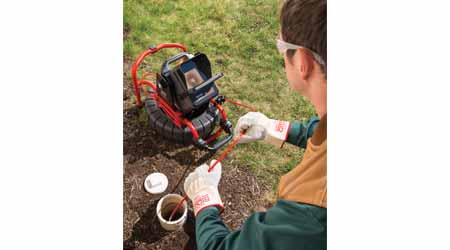Video Inspection Cameras Enhance Drain-Cleaning Process
Part four of a five-part article on toughest drain cleaning challenges
If the toughest drain-cleaning blockages sometimes baffle front-line technicians, imagine life without video inspection cameras.
Before cameras emerged on the market about 25 years ago, technicians had no way of knowing what impeded the path of water and waste in drain lines. The inability to view blockages forced technicians to guess at the problem and increased the time they needed to solve the problem.
“You were blind,” Dunbar says. “Technicians assumed if you were in a situation like that, they had to replace the pipe, but they didn’t really know what they were dealing with. Now you can go in with a camera and realize why you can’t open a clog.”
Cameras give technicians a view of the drain before embarking on a project and save time searching for the blockage. They also benefit the budget by preventing potentially more complicated and costly projects.
Video cameras can cost up to $10,000, but for managers who are unsure about the condition or history of a facility’s piping system, the investment might be worthwhile.
“The cameras really make a major impact,” Speranza says. “It makes (technicians’) jobs so much easier and more efficient. You could think you have a tree root problem, but maybe the pipe’s just collapsed. The cameras allow you to identify something like that, but if you can know exactly where it is, you can dig up a 3-square-foot area instead of a 100-square-foot area trying to find it. It’s a huge advantage for the maintenance guys.”
Related Topics:
















